
| Component | Specifications | Details | Manufacturing Process |
|---|---|---|---|
| Display | 32-inch or larger touch screen | High-definition, responsive touch interface | Assembled using industrial-grade LCD panels and capacitive touch sensors |
| Processor | Intel Core i5 or higher | Ensures smooth operation and quick processing of orders | Processor is sourced from leading chip manufacturers and integrated on-site |
| Operating System | Custom Linux-based OS | Optimized for performance and security in a quick-service restaurant environment | Customized and pre-installed during the kiosk assembly |
| Payment Terminal | EMV-compliant card reader with NFC | Supports credit/debit cards, mobile payments, and contactless transactions | Integrated with payment processors and tested for compliance |
| Chassis | Steel or aluminum frame with anti-fingerprint coating | Durable, sleek design that withstands heavy usage | Manufactured using precision metalworking, followed by powder coating |
| Connectivity | Wi-Fi, Ethernet, Bluetooth | Enables real-time communication with kitchen and POS systems | Wireless modules are embedded during assembly |
| Printer | Thermal receipt printer | Fast, reliable printing of receipts | Integrated with the kiosk and tested for print quality and durability |
| Software | McDonald's proprietary ordering and payment software | Intuitive user interface, supports multiple languages, upsell features | Software is developed and rigorously tested before deployment |
McDonald's kiosks combine robust hardware and tailored software to enhance the customer experience. The hardware typically includes a large touch screen for easy interaction, an Intel Core i5 processor for fast performance, and an EMV-compliant payment terminal for secure transactions. The kiosks also feature a durable metal chassis, a thermal receipt printer, and connectivity options like Wi-Fi and Ethernet.
On the software side, the kiosks run McDonald's proprietary OS, optimized for efficient ordering and payment processing. The software interface is designed to be intuitive and user-friendly, allowing customers to browse the menu, customize orders, and make payments quickly. It supports multiple languages and integrates seamlessly with McDonald's POS and kitchen systems, ensuring real-time updates and smooth operation.
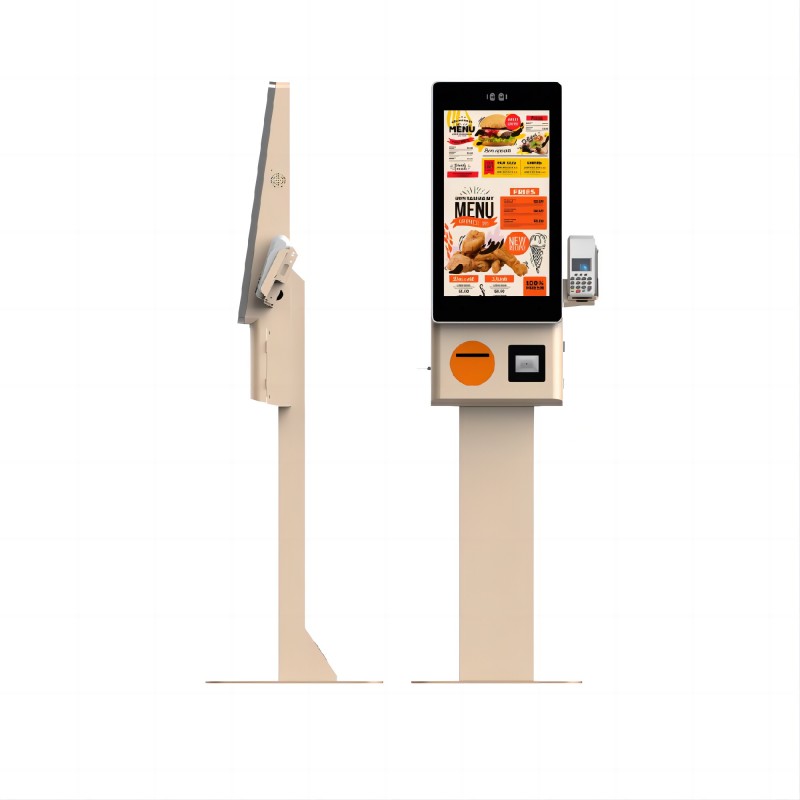
McDonald's kiosks streamline the ordering process through an intuitive, self-service system. Customers start by interacting with a large touch screen where they browse the menu, view detailed item descriptions, and customize their orders. Once selections are made, the kiosk prompts for payment, which can be completed using an EMV-compliant card reader or mobile payment options.
After payment, the kiosk prints a receipt with an order number and estimated preparation time. The order is then sent directly to the kitchen and McDonald’s POS system, ensuring real-time processing. Customers can wait for their food at the pickup counter, where their order is prepared and served. This system reduces wait times and enhances efficiency by automating key aspects of the ordering process.
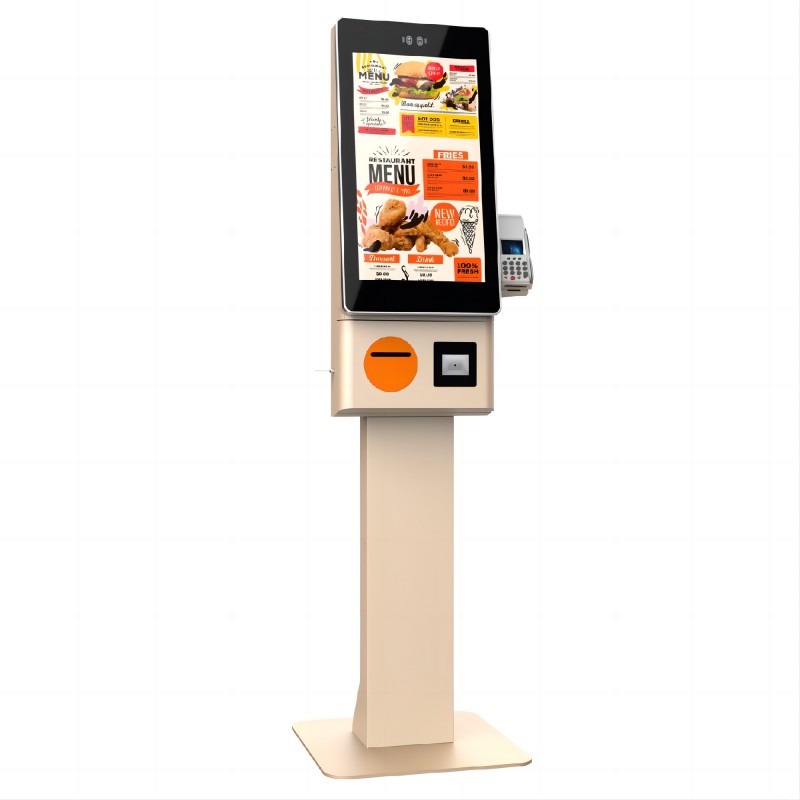
Start Interaction: Approach the kiosk and tap the screen to begin. The menu will be displayed.
Browse Menu: Scroll through the menu options, including promotions and meal deals. You can view images and descriptions of items.
Select Items: Tap on the items you wish to order. Customize your selections (e.g., add toppings or modify ingredients) as desired.
Review Order: Check your order summary to ensure everything is correct. Make any necessary adjustments before proceeding.
Payment: Choose your payment method. Use the EMV card reader or mobile payment option to complete the transaction. Follow the on-screen prompts.
Receipt and Pickup: Collect your printed receipt, which will include an order number. Wait for your number to be called at the pickup counter.
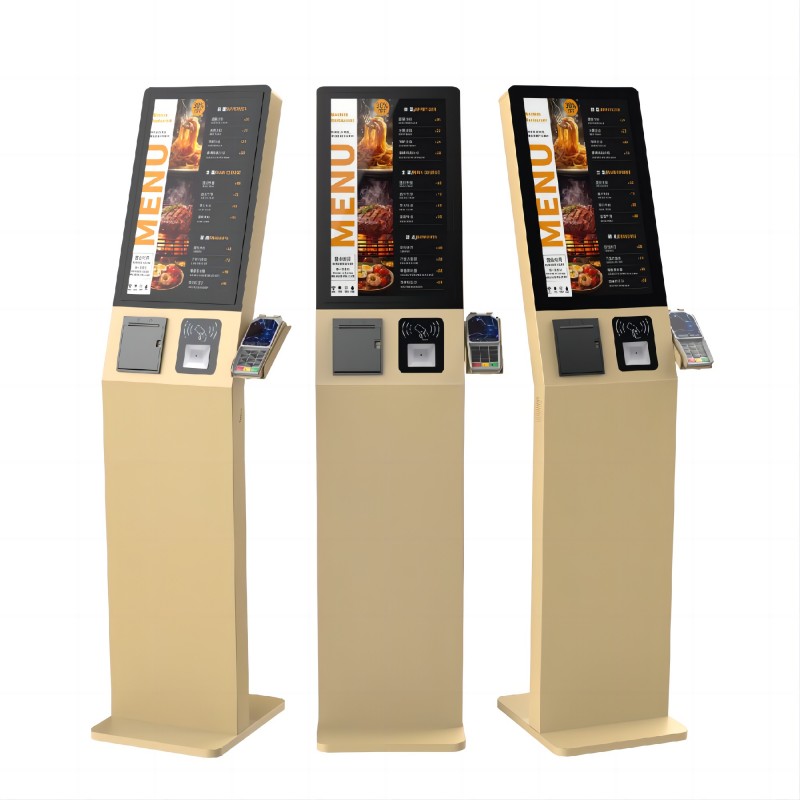
Order Placement: Allows customers to browse the menu, select items, and customize their orders without cashier assistance, streamlining the ordering process.
Payment Processing: Facilitates secure payment transactions using various methods, including credit/debit cards and mobile payments, directly at the kiosk.
Order Customization: Provides options to modify menu items according to individual preferences, such as adding or removing ingredients.
Promotions and Upselling: Displays current promotions, special deals, and upsell opportunities to enhance the customer experience and increase sales.
Order Tracking: Generates a receipt with an order number and estimated preparation time, allowing customers to track their order status and reduce wait times.
Multilingual Support: Offers interface options in multiple languages, making it accessible to a diverse customer base and improving the overall dining experience.
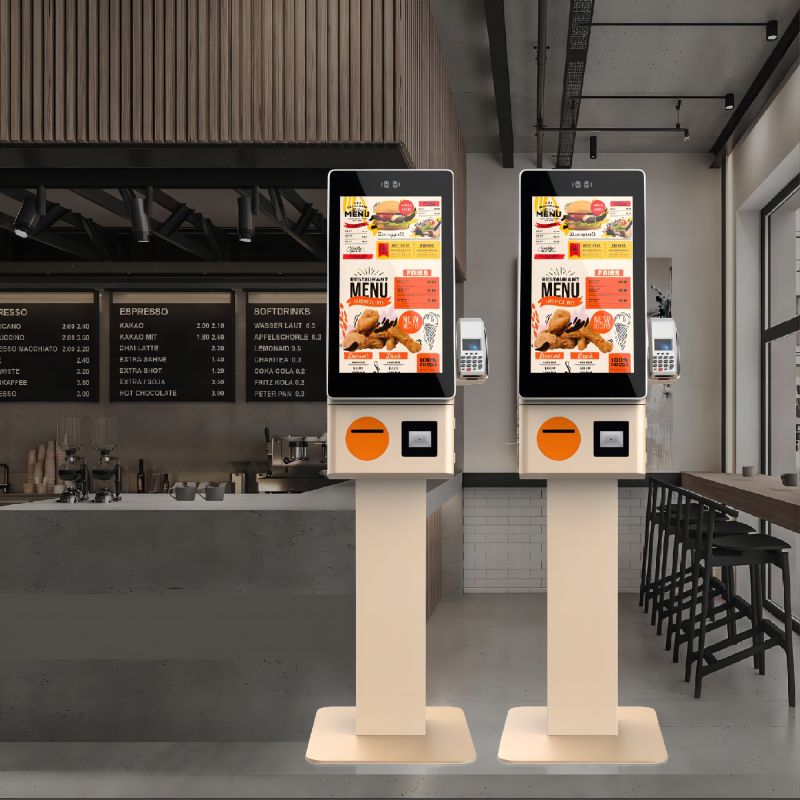
Menu Layout and Design: Tailor the menu interface to reflect seasonal promotions, new items, or regional specialties, ensuring relevance to the local customer base.
Custom Branding: Incorporate McDonald’s branding elements, such as logos and color schemes, to maintain consistency with the restaurant’s overall aesthetic.
Language Options: Offer multiple language options on the screen to accommodate a diverse range of customers and improve accessibility.
Order Customization: Allow customers to customize their orders by adding or removing ingredients, selecting portion sizes, or choosing special instructions.
Promotional Features: Integrate dynamic displays for promotions and special deals, which can be updated in real-time to reflect current offers and increase sales.
Accessibility Features: Include options for high-contrast text, larger fonts, or audio instructions to assist customers with visual impairments or other accessibility needs.
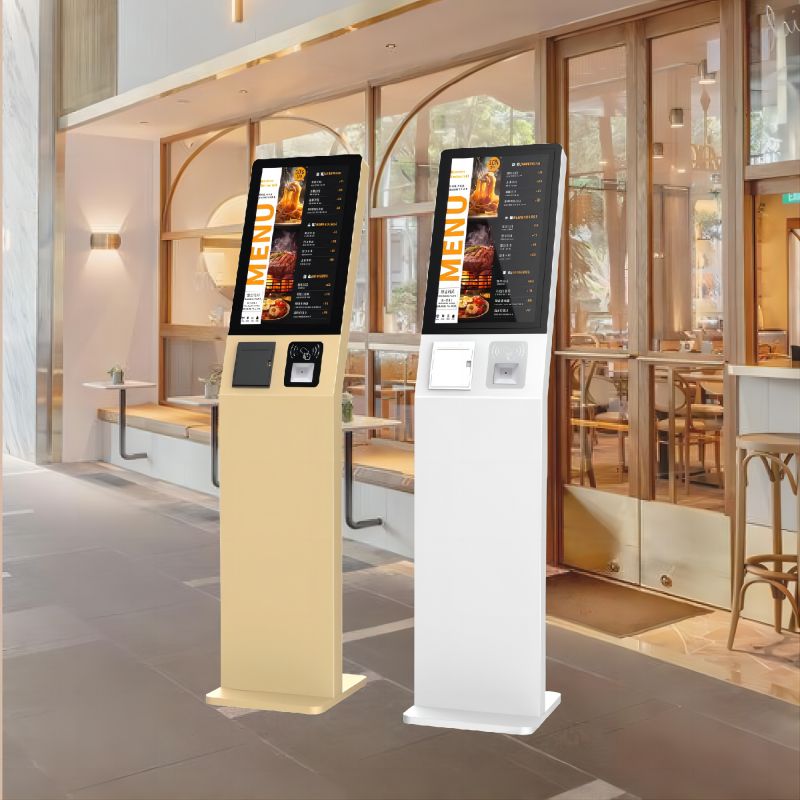
Enhanced Efficiency: Streamlines the ordering process, reducing wait times and improving overall speed of service by allowing customers to place orders and pay directly at the kiosk.
Increased Order Accuracy: Minimizes human error by allowing customers to input their orders directly, leading to fewer mistakes and a more accurate fulfillment of requests.
Improved Customer Experience: Provides a self-service option that can be faster and more convenient for customers, including options for customization and order tracking.
Upselling Opportunities: Displays promotional offers and upsell suggestions, which can increase average order value and boost sales.
Reduced Labor Costs: Decreases the need for cashier staff, allowing employees to focus on other tasks such as food preparation and customer service.
Data Collection and Insights: Gathers valuable data on customer preferences, order patterns, and peak times, which can be used to optimize menu offerings and operational strategies.
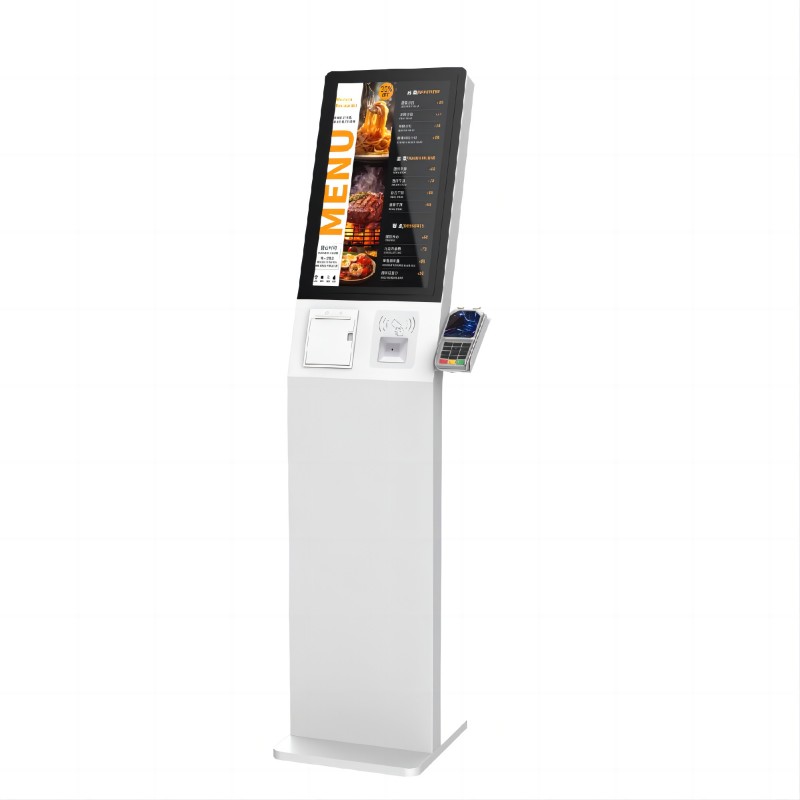
The cost of McDonald’s kiosks includes initial investment for hardware, software, and installation, which can range from $5,000 to $15,000 per unit depending on the features and technology. Additional expenses include maintenance, software updates, and training for staff.
The return on investment (ROI) is realized through several factors: reduced labor costs by minimizing cashier needs, increased order accuracy which decreases wastage, and higher sales due to effective upselling and promotions. Improved customer satisfaction leads to repeat business and higher throughput, contributing to overall revenue growth. Typically, businesses can expect to see ROI within 1-2 years, depending on usage and volume.
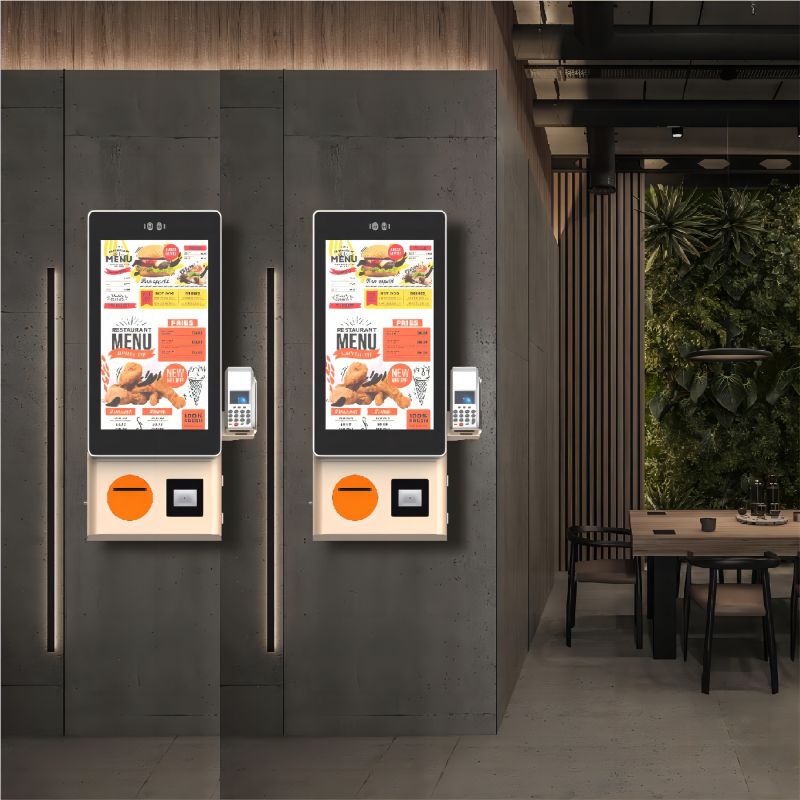
| Type | Size | Design | Price Range |
|---|---|---|---|
| Standard Kiosk | Typically 24-32 inches | Touchscreen, basic branding | $5,000 - $8,000 |
| Interactive Kiosk | 32-42 inches | Enhanced touch interface, multimedia | $8,000 - $12,000 |
| Compact Kiosk | 22-30 inches | Space-efficient, basic functionality | $4,000 - $6,000 |
| Wall-Mounted Kiosk | 24-30 inches | Mounted on walls, minimal footprint | $3,000 - $5,000 |
| Custom Kiosk | Varies based on needs | Tailored design, advanced features | $10,000 - $15,000+ |
| Outdoor Kiosk | 32-42 inches | Weather-resistant, rugged design | $12,000 - $18,000 |
Define Requirements: Determine the type, size, and features you need based on your business requirements and location. Consider factors like indoor/outdoor placement, customer volume, and desired functionality.
Research Suppliers: Look for reputable kiosk manufacturers and suppliers who specialize in McDonald’s or similar kiosks. Compare their offerings, customer reviews, and service support.
Request Proposals: Contact multiple suppliers to get detailed proposals including pricing, features, and customization options. Ensure they meet your technical and operational needs.
Evaluate Options: Review the proposals, focusing on cost, design, durability, and support services. Assess the total cost of ownership including installation, maintenance, and potential upgrades.
Negotiate Terms: Discuss pricing, warranty, and service agreements with the supplier. Negotiate for the best possible terms and ensure all aspects are covered in the contract.
Place Order: Once you’ve selected a supplier and finalized the terms, place your order. Arrange for delivery, installation, and any necessary training for staff.
Monitor and Evaluate: After installation, monitor the kiosk’s performance and gather feedback from users. Evaluate the ROI and ensure the kiosk meets your operational and customer service goals.
What did our happy clients say?
Absolutely thrilled with our McD kiosk purchase! It has streamlined our ordering process and improved customer satisfaction. The installation was smooth, and the support has been excellent. Highly recommend!
The McD kiosk has exceeded our expectations! It's user-friendly, boosts efficiency, and has reduced wait times. Great value for the investment, and the customer service was top-notch. Worth every penny!
We’re very pleased with our new McD kiosk. The design fits perfectly in our space, and it’s been a game-changer for our operations. The team provided fantastic support throughout the process. Thank you!
Incredible upgrade to our service with the McD kiosk. It's easy to use, and customers love the faster checkout. The ROI has been impressive, and the supplier’s service was outstanding. Highly recommended!